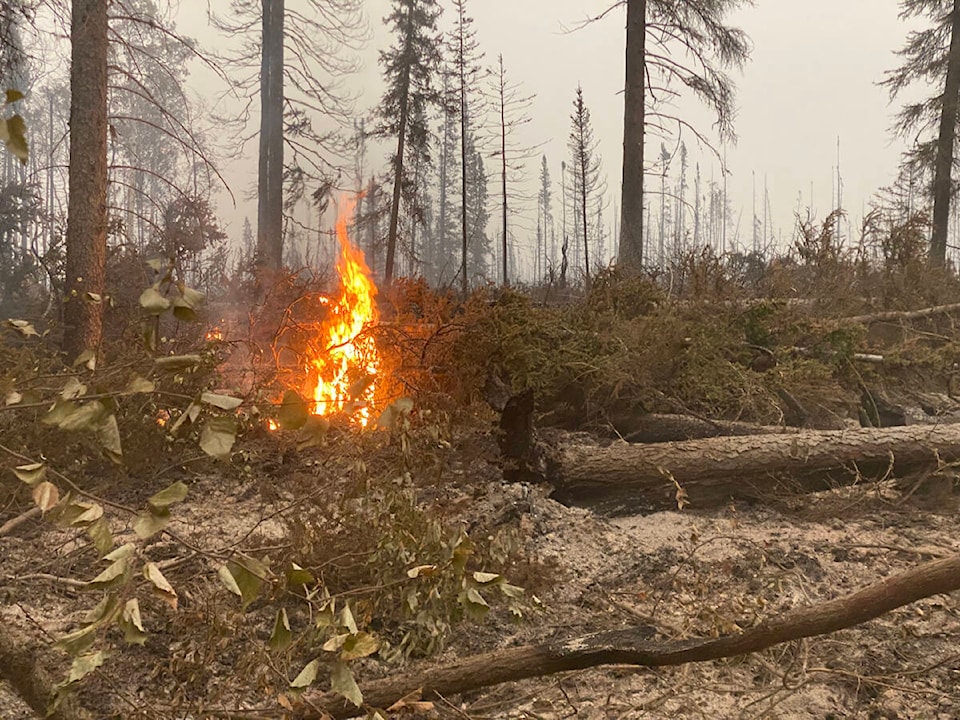A number of environmental factors determine if and how wildfires develop into something like the ones ravaging the NWT this summer.
NWT wildfire information officer Mike Westwick told SA����Ӱ�Ӵ�ý that each area in the NWT has its own advantages and disadvantages when it comes to containing a fire.
SA����Ӱ�Ӵ�ý�North SlaveSA����Ӱ�Ӵ�ý�s main advantage over the South Slave would be the slightly milder weather we tend to experience here due to our more northerly location than the South Slave,SA����Ӱ�Ӵ�ý� he said, noting accessibility is also a key factor in fire management.
SA����Ӱ�Ӵ�ý�Perhaps one thing to note in fire management in terms of advantage SA����Ӱ�Ӵ�ý� thereSA����Ӱ�Ӵ�ý�s certainly an advantage in the south, in terms of not being on the Canadian Shield. When you look at the potential for using heavy equipment, like bulldozers, to contribute to firefighting efforts, a lot more is accessible in the South Slave than the North Slave due to the more favourable terrain.SA����Ӱ�Ӵ�ý�
Another aspect of wildfires is they burn faster uphill than downhill. Topography SA����Ӱ�Ӵ�ý� both in providing a fire a path to travel and channelling wind into the fire SA����Ӱ�Ӵ�ý� is typically a major factor in forest fire management.
According to the B.C. Wildfire Service, the biggest factor in how quickly and dramatically a forest fire spreads is the type of fuel. In terms of firefighting, forests are divided into three layers: ground fuels, surface fuels and aerial or crown fuels. Ground fuels are within the soil and include the roots of trees, as well as the organic parts of dirt, known as duff. Surface fuels are everything from grass to brush to fallen leaves. Crown fuels are the standing tree trunks and the overarching canopy.
Types of plants being burned matter. Plants that are rich in resins can ignite easier, while plants with more water in their sap take longer to ignite. The distribution and density of fuel in a forest fire is also a key factor. Areas with lots of dead biomass, such as leaves and logs, can spread a fire far more quickly than a patchy area. Compacted material burns slower as there is less space for oxygen to move around to fuel the combustion reaction, while loosely compacted fuels can burn much quicker.
SA����Ӱ�Ӵ�ý�Deciduous trees, the ones which lose their leaves, tend to be much less flammable than evergreen trees,SA����Ӱ�Ӵ�ý� said Westwick. SA����Ӱ�Ӵ�ý�Spruce is much more volatile than aspen, and pine is much more volatile than oak, as a couple of examples. Fine fuels, like grass, twigs or dry leaves burn more easily and can lead to quick spread to larger fuel sources, like big evergreen trees, which is why theySA����Ӱ�Ӵ�ý�re always a concern.SA����Ӱ�Ӵ�ý�
A few factors that do not directly affect forest fire management include the depth of the soil, underlying permafrost or the pH of the soil.
SA����Ӱ�Ӵ�ý�ItSA����Ӱ�Ӵ�ý�s about weather, fuels and topography,SA����Ӱ�Ӵ�ý� said Westwick. SA����Ӱ�Ӵ�ý�If youSA����Ӱ�Ӵ�ý�ve got a big black spruce stand, an ignition source, dry conditions, itSA����Ӱ�Ӵ�ý�s going to burn, and itSA����Ӱ�Ӵ�ý�s going to burn hot no matter how acidic the soil is.SA����Ӱ�Ӵ�ý�



